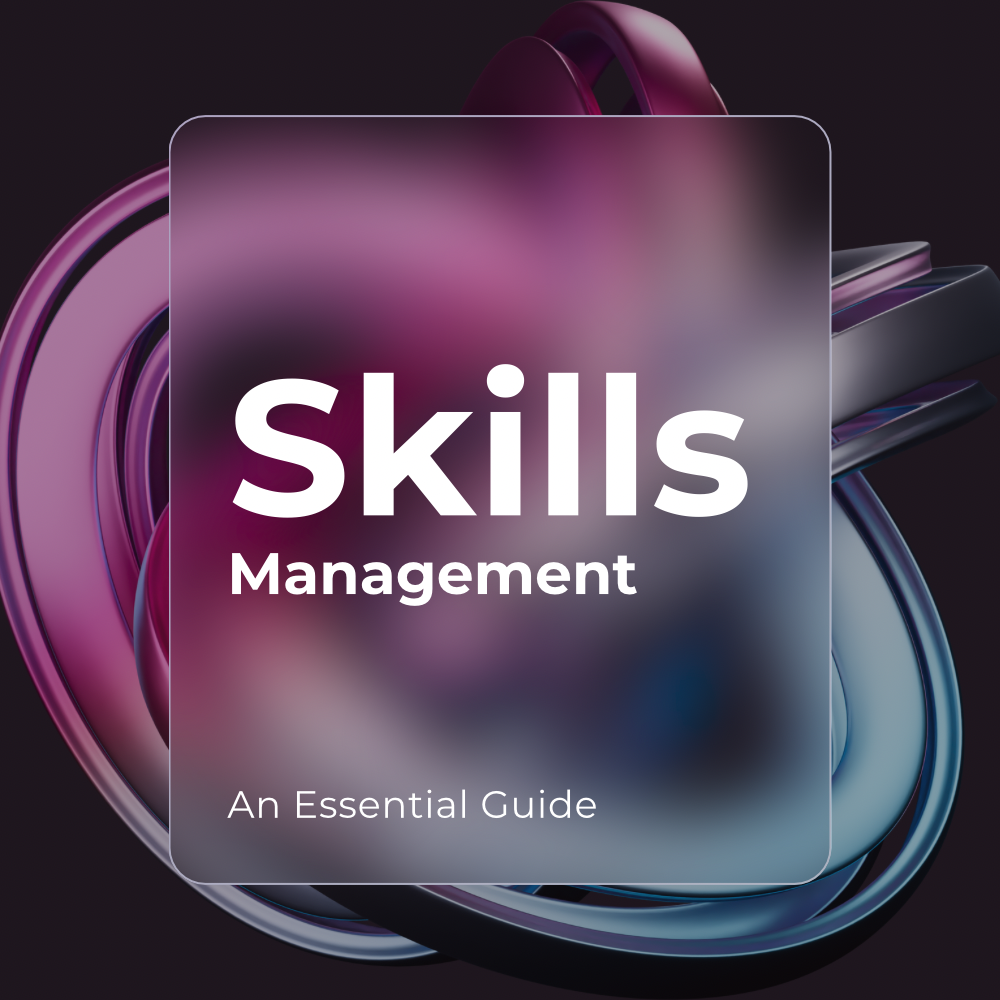 Introduction to Skills Management
Introduction to Skills Management
Skills management is a strategic approach to identify, develop, and manage the skills and competencies of employees within an organization. This methodology ensures that the right individuals with the right skills are placed in the right roles, thus optimizing productivity and fostering growth. Implementing a sound skills management system not only enhances individual performance but also propels the organization towards its goals.
The importance of good management skills in business cannot be overstated. Effective management skills are vital in guiding teams, resolving conflicts, setting strategic directions, and making informed decisions. The success of an organization hinges on the management’s ability to utilize these skills effectively.
Types of Management Skills
Management skills are broadly categorized into three main types:
Technical Skills
Technical skills pertain to the specific knowledge and expertise required in a particular field or job role. These skills are usually acquired through education, training, or on-the-job experience. Examples include proficiency in specific software, engineering skills, or expertise in finance-related tools and methodologies. Investopedia offers a comprehensive look into various technical skills relevant in today’s business landscape.
Conceptual Skills
Conceptual skills involve the ability to think critically, analyze complex situations, and devise innovative solutions. Managers with strong conceptual skills can visualize the bigger picture, understand the interdependencies between different units of an organization, and foresee potential challenges.
Human or Interpersonal Skills
Human or interpersonal skills relate to the ability to interact effectively with others. These skills are crucial for managers as they often have to lead teams, communicate with stakeholders, and manage conflicts. Interpersonal skills encompass empathy, active listening, and effective communication.
 The Importance of Skills Management
The Importance of Skills Management
Skills management isn’t just another buzzword; it’s a pivotal element in the modern organizational landscape. By understanding and managing the skills within an organization, businesses can navigate complex challenges, optimize performance, and achieve their strategic goals. But why is it so crucial?
Why do you need skills management?
Benefits to Organizations
At its core, skills management provides a structured approach to understanding what skills exist within an organization and how they can be best utilized. This leads to informed decision-making, better alignment with organizational goals, and a competitive edge in the market. An in-depth analysis by Forbes showcases the myriad benefits organizations can reap through effective skills management.
Finding the Right Person for the Job
With a comprehensive skills management system, organizations can match the right individuals with the right roles. This ensures that tasks are handled by those most competent, leading to higher quality outcomes and increased job satisfaction. The Society for Human Resource Management provides valuable insights on this aspect of skills management.
Bridging the Skills Gap with Targeted Training
Identifying skills gaps is a primary benefit of skills management. Once identified, organizations can implement targeted training programs, ensuring employees are equipped to meet current and future demands. This proactive approach not only bolsters performance but also empowers employees, fostering a culture of continuous learning. ATD discusses the significance of addressing skills gaps through tailored training.
Boosting Productivity and Efficiency
By aligning skills with roles and providing necessary training, organizations can significantly boost productivity. When employees are competent in their roles, they can perform tasks more efficiently, leading to better results in shorter times. A report by McKinsey & Company highlights the correlation between skills management and enhanced productivity.
Enhancing Recruitment and Retention Strategies
Skills management plays a vital role in recruitment. By understanding the skills needed, HR can refine hiring processes to attract the right talent. Furthermore, by promoting a culture of growth and development, organizations can improve retention rates. The Harvard Business Review offers insights into how skills management can revolutionize recruitment and retention.
Leadership and Workforce Development
Skills management is not just about the present; it’s also about preparing for the future. By identifying potential leaders and providing them with the necessary training and opportunities, organizations can ensure a steady pipeline of competent leadership. Additionally, continuous workforce development ensures that the organization remains agile and adaptable in a rapidly changing business environment. Co-Active delves deeper into the importance of leadership development in the context of skills management.
 Skills Management Benefits to Individuals
Skills Management Benefits to Individuals
While the advantages of skills management to organizations are evident, it’s equally important to recognize its benefits on an individual level. Proper skills management not only fosters a productive work environment but also significantly impacts an individual’s personal and professional journey.
Opportunities for Personal Growth and Learning
Skills management opens the door to myriad learning opportunities. By identifying skills gaps and areas of improvement, individuals can access targeted training and development resources. This not only equips them for current roles but also prepares them for future challenges. According to Forbes, continuous learning is crucial in today’s ever-evolving job market, and skills management plays a pivotal role in facilitating this.
Enhancing Happiness, Motivation, and Satisfaction
When individuals are given the tools and opportunities to hone their skills and talents, it directly impacts their well-being. A supportive environment where one’s abilities are recognized and nurtured leads to increased happiness and motivation. Positive Psychology highlights how skill development correlates with higher levels of job satisfaction, positively influencing overall life contentment.
Setting Clear Expectations, Goals, and Career Paths
Skills management provides clarity. With a well-defined skills inventory, individuals can set tangible goals, aligning their personal aspirations with organizational objectives. This clarity is instrumental in carving out clear career paths, leading to structured professional growth.
Implementation of Skills Management
In today’s dynamic business environment, effectively implementing skills management can be the difference between organizational success and stagnation. Here’s a guide on how to ensure your skills management strategy is both comprehensive and effective.
How to Effectively Use Skills Management
Using skills management effectively starts with a clear understanding of organizational goals and aligning them with employee capabilities. This involves a combination of technology, training, and top-down commitment.
Creating a Skills Taxonomy: Listing Core Skills and Competencies
A skills taxonomy provides a structured framework that lists all the necessary skills and competencies for an organization. It serves as the foundation for all subsequent skills management activities. Crafting a robust taxonomy involves consulting with department heads, analyzing job roles, and utilizing industry benchmarks. This Linkedin article offers insights into building a robust skills taxonomy.
Mapping Existing Skills with a Skills Matrix
Once you’ve established a taxonomy, the next step is to map existing employee skills using a skills matrix. This visual tool allows managers to quickly identify strengths, weaknesses, and training needs within their teams. The GFoundry platform provides a skills matrix, which shows the skills of individuals, teams and the entire organization.
Regularly Updating and Evaluating the Skills Inventory
Skills requirements evolve, and so should your skills inventory. Regular evaluations ensure that the organization remains adaptable and prepared for future challenges. This requires feedback mechanisms, regular training sessions, and data analytics.
Challenges in Skills Management
While the benefits of skills management are numerous, implementation can face challenges. These range from resistance to change, data inaccuracies, to evolving industry standards.
Implementing an effective skills management system is crucial for the growth and sustainability of any organization. However, the road to effective skills management is riddled with challenges. Recognizing and addressing these challenges early can significantly improve the chances of a successful implementation.
Some of the Challenges are:
1) Resistance to Change
Introducing any new system or process in an organization can meet with resistance from employees, especially if they view it as an additional burden or a potential threat to their job security. Overcoming this requires transparent communication about the benefits of skills management, not just for the organization, but for individual career growth. Engaging employees in the process and incorporating their feedback can also help alleviate concerns.
2) Data Inaccuracies
A skills management system is only as good as the data it’s based on. Inaccurate skills data can lead to wrong decisions, misplaced training investments, and missed opportunities. Ensuring data accuracy requires a combination of regular audits, employee self-assessments, and manager reviews.
3) Evolving Industry Standards
The skills required today might be obsolete tomorrow. Rapid technological advancements and changing industry standards mean that organizations have to be agile in updating their skills taxonomy. Staying connected with industry bodies, participating in relevant forums, and keeping an ear to the ground for new trends can help in this regard.
4) Lack of Clarity in Role Definitions
Unclear or overlapping job roles can make skills management a daunting task. Without a clear definition of what each role entails, mapping skills becomes challenging. Organizations need to invest time in clearly defining roles, responsibilities, and the skills required for each position.
5) Integration with Existing Systems
Skills management doesn’t operate in isolation. It needs to integrate seamlessly with other HR systems like recruitment, performance management, and learning & development. Ensuring this integration without data losses or redundancies is a challenge.
Addressing these challenges head-on with a proactive approach can pave the way for a successful skills management implementation that serves both organizational and employee growth.
Managing Team Sizes and Diverse Work Environments
Modern organizations can vary widely in terms of team sizes and diversity. Implementing skills management in such environments requires flexibility and a tailored approach.
Adapting to Hybrid, Remote, and Flexible Work Settings
The future of work is increasingly remote and flexible. Adapting skills management to these settings is crucial. This involves leveraging technology, fostering communication, and ensuring that remote workers have access to the same resources and training as their in-office counterparts.
 Skills Management Systems and Tools
Skills Management Systems and Tools
In today’s dynamic business environment, it’s paramount for organizations to understand and harness the skills within their workforce. Skills management systems play a critical role in facilitating this. Let’s delve into the significance and application of these systems.
Why You Should Implement a Skills Management System
Implementing a skills management system can be transformative. It offers a strategic approach to understand, categorize, and utilize skills within an organization. This not only enhances efficiency but also drives performance, innovation, and growth.
Maintaining an Updated Dataset on Skills and Roles
Constant evolution in job roles and required skills necessitates an updated dataset. This dataset ensures that organizations are always in sync with the current skills landscape, paving the way for accurate decision-making and resource allocation.
Ensuring Accurate Resource-Task Mapping
Accurate mapping of resources to tasks is vital for efficiency and productivity. With a comprehensive skills management system, organizations can assign tasks to the most competent individuals, ensuring optimal results and enhanced job satisfaction.
Identifying Potential Skills and Addressing Skill Gaps
One of the standout benefits of skills management systems is the ability to pinpoint potential skills and identify gaps. With this knowledge, organizations can take proactive measures, be it targeted training or strategic recruitment.
Improving Time-to-Competency and People Management Efficiency
With clear insights into employee skills, organizations can reduce the time it takes for employees to become competent in their roles. Moreover, streamlined people management processes lead to a more agile and responsive organization.
Selecting and Introducing an Effective Skills Management System
Choosing the right system is crucial. Factors such as scalability, integration capabilities, and user-friendliness should be considered. Once selected, a phased introduction ensures smooth integration with existing processes.
Assessing Current Skills Supply and Determining Required Skills
Before implementing any system, it’s crucial to assess the current skills inventory. This provides a clear picture of where the organization stands and what skills are required for future endeavors.
Planning to Bridge Any Skills Gap: Upskilling and Recruitment
Upon identifying skills gaps, organizations must strategize to bridge them. This could involve upskilling existing employees or recruiting new talent with the requisite skills. A mix of both often yields the best results.
Utilizing Skills Management Software like GFoundry for Optimal Results
Software solutions like GFoundry offer a comprehensive suite of tools for effective skills management. With features such as gamification, AI-driven insights, and extensive integrations, GFoundry stands out as an exemplary choice for organizations aiming for excellence in skills management.
Competency & Skills Mapping with GFoundry
Understanding an organization’s competencies is pivotal to its success. GFoundry’s “Competency Mapping” tool offers a comprehensive solution, enabling businesses to visualize and manage the entire organization’s competency landscape.
General Overview
The innovative Competency Mapping feature in GFoundry provides an extensive view of the organization’s competencies. It not only catalogs individual skills and knowledge but also tracks their evolution over time. This real-time monitoring ensures that the organization remains adaptive and future-ready.
Key Features of Competency Mapping
- Skill Gap Identification: Quickly recognize and address areas where additional training or recruitment might be necessary.
- Tag-Based Training Content Filters: Easily sift through content based on specific tags, ensuring relevancy in training modules.
- Evaluation of Suitability for Current Role: Assess if employees’ competencies align with their current roles, facilitating optimal resource allocation.
- Automatic Quiz Generation: Generate quizzes based on specific skills and topics, reinforcing learning and assessment.
- Talent Identification: Utilize filters to identify talent for current and forthcoming project requirements.
- Integration with Evaluation Module: Seamlessly align content with Individual Development Plans (IDPs) to ensure tailored growth and development for every employee.
How GFoundry’s Competency Mapping Engine Works
The engine functions by amalgamating data from various sources:
- Learn Module Interaction: Tracks courses undertaken, videos viewed, quizzes attempted, and documents accessed.
- Peer Feedback from Recognition Module: Gathers invaluable insights from peers and colleagues to offer a holistic view of competencies.
- Competence Assessments in Evaluation & Careers Module: Incorporates formal competence evaluations into the mapping process.
This robust system provides real-time updates on competency gaps through dynamic dashboards, ensuring that organizations can swiftly address any emerging challenges.
Dashboard Features
The dashboard is the heart of the Competency Mapping tool. Here, users can view the competency/skills matrix, reflecting their interactions with tagged Learn Contents. Additionally, the filter functionality allows for the selection of specific Learn Content, Teams, or even timeframes. This granularity offers a deep dive into users’ competency progression, ensuring that businesses remain informed and proactive in their talent management strategies.

Subscribe to GFoundry Newsletter: Weekly Insights on HR’s Most Pressing Topics
Keep on Reading:
- Mastering Employee Turnover: The Ultimate Guide to Retaining Talent and Boosting Productivity
- The Ultimate Guide for Remote Onboarding
- A Comprehensive Guide to the Impact, Benefits, and Future of Artificial Intelligence in HR
- HR Trends: What Will HR Look Like in 2024?
- Benefits of a Good Organizational Climate: Productivity and Talent Retention
- Building Resilient and Adaptive Workforces: A Global Talent Trends Study
- Employee Feedback: complete guide with real examples
- How to improve Employee Engagement and Performance? Your Ultimate Guide
Ready to get started?
Take the next step and learn more about how GFoundry can help you.

 Introduction to Skills Management
Introduction to Skills Management The Importance of Skills Management
The Importance of Skills Management Skills Management Benefits to Individuals
Skills Management Benefits to Individuals
 Skills Management Systems and Tools
Skills Management Systems and Tools